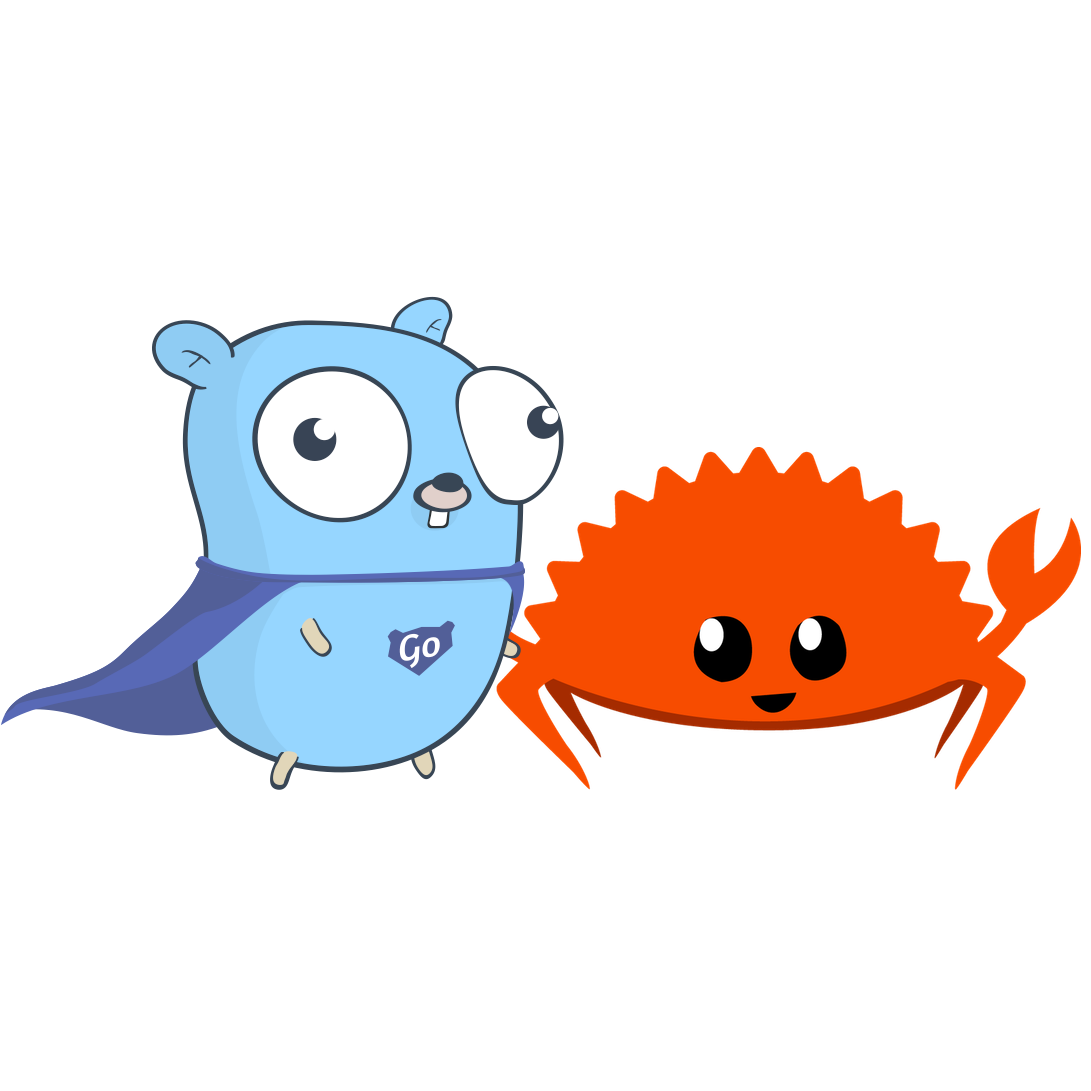Thou shalt not suffer a flaky test to live, because it’s annoying, counterproductive, and dangerous: one day it might fail for real, and you won’t notice. Here’s what to do.
All tagged golang
Rust vs Go in 2025
Which is a better choice, Rust or Go? Which language should you choose for your next project, and why? How do the two compare in areas like performance, simplicity, safety, features, scale, and concurrency?
Undertesting and overtesting
Tests are great, provided they actually test something. But are your tests too optimistic (assuming the code already works), or too persnickety (testing the irrelevant)?
Rust and Go vs everything else
Alex Pliutau and I discuss what Go programmers should know about Rust, and why the two languages make perfect partners.
Constraints in Go
Freedom is nothing without constraints, and Go’s generics gives us a powerful way to build polymorphic types and functions constrained by type sets. Let’s geek out.
Generic types in Go
What kind of idiot would carry a package for someone when they've absolutely no idea what's inside it? Well, generic types in Go are exactly like that, only in a good way.
Testing legacy code
How do you rescue a legacy codebase that has no tests? Let's look at some techniques for clawing your way back to maintainability, one test at a time.
Programming is fun
I was a guest on the Cup o’ Go podcast recently, talking with Shay Nehmad and Jonathan Hall about writing and teaching Go. Here’s a transcript of our chat.
Encrypting with AES
AES is an amazing, state-of-the-art encryption system, and it’s built right in to Go as part of the standard library. It’s also incredibly easy to use. Let’s see how!
Iterators in Go
Iterators in Go are a neat way to write “lazy loops”, where we never generate more results than we actually use. Let’s see what that would look like in Go programs, and what new facilities it gives us in the standard library.
Shameless green
Building software is easy when we’re guided by tests, because we can start with quick-and-dirty solutions, without worrying about whether the code is elegant and readable—yet. Let’s see how to use the TDD technique called “Shameless Green”.
The smallest thing in Go
iota is a neat feature of Go that lets us create “enums”: lists of constants with arbitrary values. Let’s find out how to use iota, with this quick tutorial.
Programming with confidence
There’s an easy, pleasant, and reliable way to build software in Go, guided by tests. Let’s find out what it’s like to program with confidence, in the first part of this TDD tutorial series.
Generics in Go
Generics what now? This friendly, down-to-earth tutorial series explains how Go’s generic functions and types work, why we need them, and where we can use them.
Fixing a fuzzed-up function
In the thrilling conclusion to our fuzz testing series, we’ll use Go’s fuzzer to find a real bug in our code, and also to verify the fix.
Target acquired
Let’s continue our exploration of fuzz testing in Go with a look at how to write a fuzz target for a (nearly) realistic function. This time we’ll try to detect a common kind of bug involving a confusion between runes and bytes.
What the fuzz?
Fuzz testing is Go’s clever way of generating new test inputs that you didn’t think of—and that may flush out some hidden bugs. Stand by for things to get a little fuzzy!
The Tao of Go
What is the Tao of Go, and how can we work with it, like a surfer going with the waves instead of struggling against them? By being kind, simple, humble, and not striving; here’s how.
Random testing in Go
Choosing good test cases for our Go programs can be a bit hit-and-miss. What if we could automate that process? Let’s talk about randomisation, property-based testing, and Go’s built-in fuzz testing feature.
The adapter pattern in Go
How do you test a database without a database? Don't worry, this isn't one of those Zen puzzles. I have something more practical, but equally enlightening, in mind. Let’s use the adapter pattern to solve the riddle.










